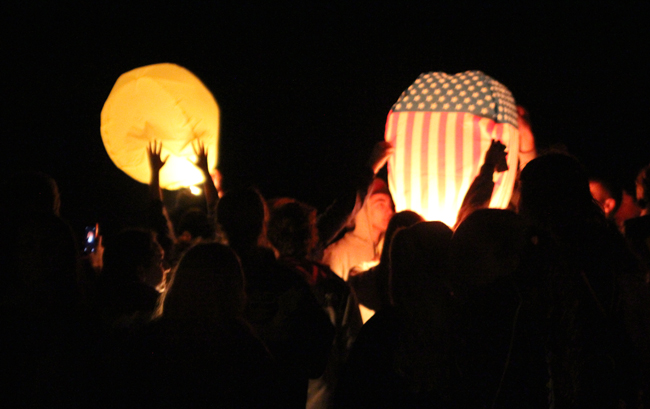A life lost, a school shaken, a community devastated

Tom had likely never heard of 17-year-olds Demario Harris Jr. or Isaiah Langston. Today, their names are forever linked as three young men who died just days apart under somewhat similar circumstances.
Demario was playing cornerback for Charles Henderson High School in Troy, Ala., when he collapsed after making a tackle in a Sept. 26 game. His father wrote on Facebook that his son died two days later of a brain hemorrhage caused by a hit in the game.
“He may have had a pre-existing condition,” Demario Sr. wrote. “But there is no way to tell now.”
Isaiah, a lineman on the Rolesville High School football team in Rolesville, N.C., collapsed during pre-game warmups the same night Demario was injured. He died at the hospital Sept. 29. His older brother told a local television station that his collapse “had something to do with a blood clot in his brain.”
More than a million student athletes participate in high school football each year, according to a survey by the National Federation of State High School Associations. Eight high school football players died from direct contact in 2013, according to the Annual Survey of Football Injury Research.
Nationwide, there has been an average of 3.1 deaths per football season from direct contact in the last decade, according to the National Center for Catastrophic Sport Injury Research.
Dr. Rosanna Sabini, a brain injury and concussion rehabilitation physician at North Shore-Long Island Jewish Southside Hospital, said the recent tragedies bring to light the dangers of the high-impact sport.
“I think that three having happened in such a short period of time is probably a random scenario, but certainly having had three happen at once will hopefully bring and shed more light on the potential for injury, and the severity of the injury that one might sustain in such a sport,” she said. “I just hope it opens more eyes.”
Tom is the first local athlete to die from an injury inflicted at a sporting event since 2012, when Ronan Guyer, a cross country runner at Southold High School, died after suffering cardiac arrest during a state meet practice at a golf course near Buffalo. Ronan’s parents are currently engaged in a wrongful death lawsuit with the Southold School District, Erie County, the New York State Public High School Athletic Association (NYSPHSAA), Section VI of NYSPHSAA and the volunteer fire department that responded the day Ronan collapsed, according to online court records. A trial is scheduled for January in Erie County.
Mr. Cohen said that in addition to an investigation by the Suffolk County police homicide division, which is standard in all unusual deaths, athletic director Mark Passamonte will conduct an internal investigation into the on-field incident that led to Tom’s death.
“We want to go over everything in detail and that’s going to take some time,” Mr. Cohen said at an Oct. 2 press conference, during which he called the football play a “freak accident.”
“[Mr. Passamonte] is reviewing all protocols and equipment in addition to reviewing events with our coaches,” the superintendent later said in an email.
A police report stated that Tom died of a head injury, but additional medical details have not been provided. The Suffolk County Medical Examiner’s office said the cause of death will be released only to Tom’s family, as is customary.
On Aug. 19, the second day of practice for the Wildcats this season, Tom tweeted, “I actually think my helmet is bruising my head.”
When asked about the tweet in an email this week, Mr. Cohen indicated that he had no knowledge of the helmet complaint and couldn’t say if it was ever officially reported or if Tom was using the same helmet in last week’s game.
“I know nothing about this issue,” he wrote. “I’m sure an investigation will illuminate it.”
Students at Shoreham-Wading River are required to acknowledge that they have read a concussion brochure before participating in a school sport, according to a form on the district’s website.
Mr. Millheiser said Tom never mentioned anything bothering him during last Wednesday’s game.
“If there was anything, unfortunately he didn’t say anything to us,” he said.
Tom played on both sides of the field — offense and defense — so he was on the field the majority of the game. After Tom fell to the ground, the game was suspended.
Mr. Millheiser and several school officials stood near the junior following his collapse. Tom’s father was there, too.
Both teams were eventually instructed to go to opposite end zones. They removed their helmets and took a knee while officials waited for an ambulance. The injury occurred around 5:45 p.m. and an ambulance with emergency medical technicians from the Greenlawn Fire Department responded in 10 minutes.
While Tom was put on a stretcher and placed in the vehicle, the crowd applauded, with some fans shouting, “OK, Thomas! OK, Thomas!”
The ambulance left the field at 6:05 p.m.
While ambulance companies often contract with school districts to provide a presence at sporting events, there are no state laws mandating that medical personnel be present.
Robert Zayas, executive director of NYSPHSAA, spoke with Time-Warner Cable in Buffalo about the issue last fall.
“It really is a local school decision whether there’s EMTs or athletic trainers or other professionals on the sidelines of those football fields or games,” he said. “You have to look at the feasibility, first of all, and the cost, and when you talk about having an EMT, or a doctor, a medical doctor for that matter, the cost escalates even greater than that.”
Shoreham-Wading River does employ a medical trainer and has a contract with a medical service for its home games, according to district records.
•








